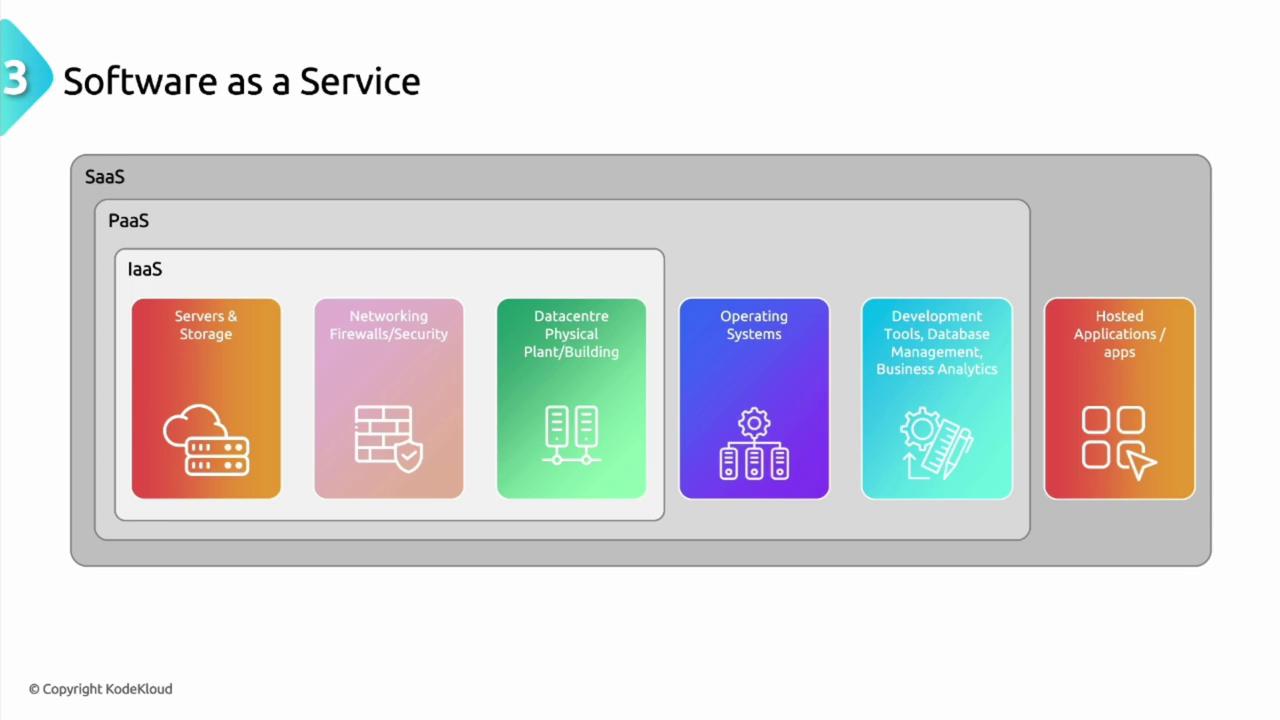AZ900: Microsoft Azure Fundamentals
Cloud Service Types
Software as a Service
Software-as-a-Service (SaaS) is analogous to subscribing to a streaming service—you access robust software solutions over the internet without the need to manage or maintain the underlying infrastructure. All that is required is an internet connection while the cloud provider handles the hosting, routine updates, and overall maintenance. For instance, if Bella Innovation opts to manage its invoicing via a SaaS solution, they might subscribe to cloud offerings that provide invoicing software like Zoho Invoice or Zoho Books. This transition relieves the team from the complexities of maintaining custom Python applications, although it does introduce reliance on third-party providers that might not cater to every customized requirement.
When analyzing the diagram below, the distinctions among various cloud service models become clear. Each model provides a different level of abstraction and management:
- Infrastructure-as-a-Service (IaaS): Offers virtualized resources such as servers, storage, and networking but requires you to install the operating system, configure your environment (e.g., setting up Python), and manage deployments.
- Platform-as-a-Service (PaaS): Extends IaaS by also managing the operating system and development tools, enabling developers to focus on writing and pushing code without handling the underlying infrastructure.
- Software-as-a-Service (SaaS): Delivers complete applications ready for use, eliminating the need for any setup related to infrastructure or platform management.

With SaaS, minimal initial setup is required. Users subscribe to the service and gain immediate access. Consider email services like Hotmail or Gmail—users do not need to manage server configurations or maintenance tasks. Similarly, streaming services like Netflix allow you to enjoy your content while the provider manages all technical details behind the scenes.
For Bella Innovation, adopting a SaaS model for invoicing means purchasing or subscribing to a tailored application rather than developing and maintaining custom code internally. Other widely recognized SaaS examples include Microsoft 365 (e.g., Outlook) and popular email services such as Gmail and Hotmail. These applications enable end-users to focus on functionality rather than worrying about hosting details, patch management, or underlying operating systems.
![]()
Note
Understanding the differences among IaaS, PaaS, and SaaS is crucial when selecting the right cloud service model for your business needs.
Next, we will delve into the Shared Responsibility Model and further compare these types of cloud services. For more details on cloud computing fundamentals, consider exploring the following resource:
Watch Video
Watch video content